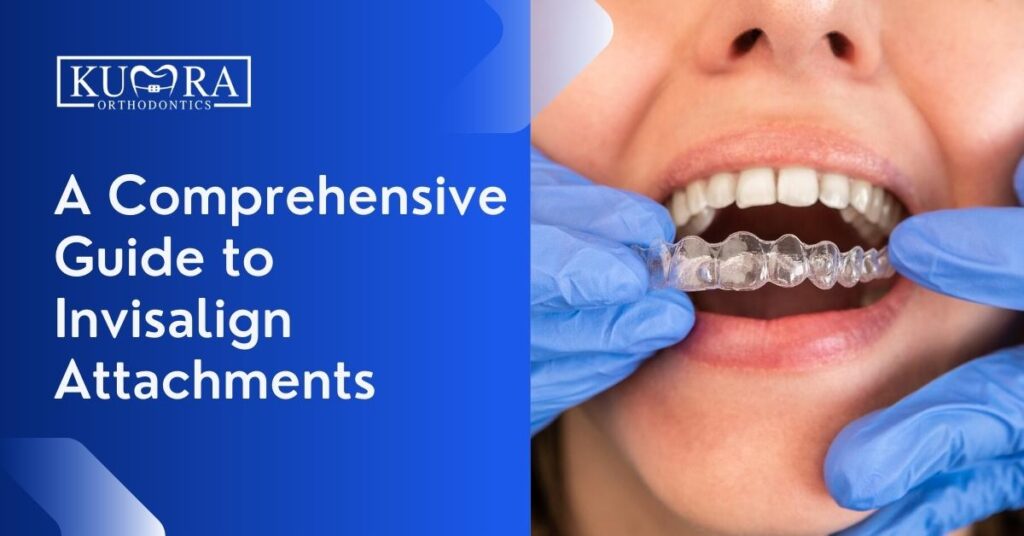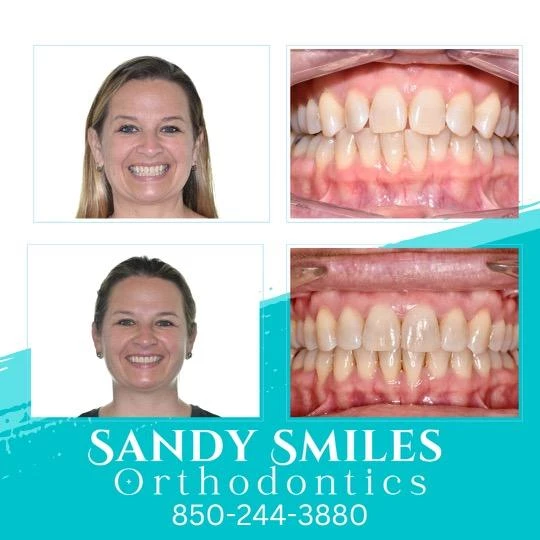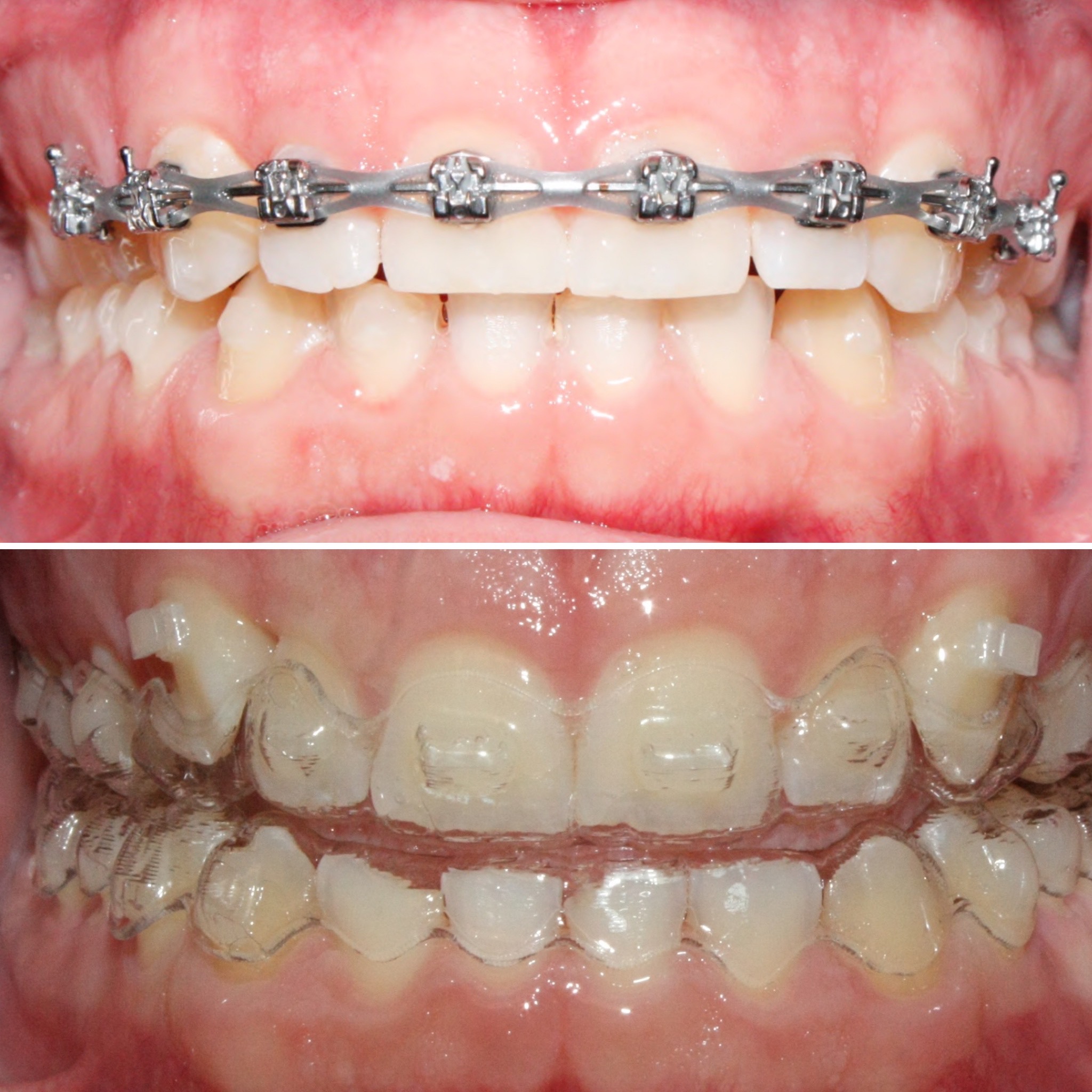Invisalign for Teens: A Modern Solution to Straightening Young Smiles
Invisalign for Teens: A Modern Solution to Straightening Young Smiles
Blog Article
Invisalign vs. Standard Dental braces: Which Choice Is Right for You?
When thinking about orthodontic therapy, the selection in between Invisalign and standard braces provides numerous essential elements that merit careful evaluation. Invisalign supplies a discreet alternative with removable aligners, while typical dental braces provide a more noticeable yet effective solution for extreme imbalance.
Introduction of Treatment Options

In contrast, traditional dental braces include steel brackets and cords that are bonded to the teeth. This method uses continuous stress over time to achieve positioning. While effective for complicated orthodontic concerns, conventional braces call for routine brows through for adjustments and can present obstacles in preserving oral health due to the difficulty of cleaning around wires and brackets.
Both choices have their advantages, and the choice frequently hinges on specific dental problems, way of living choices, and patient compliance. Eventually, seeking advice from an orthodontic expert is important for identifying the most suitable therapy plan tailored to individual needs. Comprehending the subtleties of each choice can dramatically influence the overall success of orthodontic therapy.
Visual Considerations
A substantial aspect influencing the selection between Invisalign and typical braces is the visual appeal each therapy provides. Invisalign aligners are crafted from clear plastic, making them basically unnoticeable when used.
In comparison, standard dental braces include steel brackets and wires, which can be more noticeable. While innovations in orthodontic modern technology have caused the development of smaller braces and tinted elastics, traditional dental braces still preserve an even more noticeable account. For some people, the visibility of dental braces may prevent them from looking for needed therapy.
Inevitably, the option in between Invisalign and conventional braces may depend upon personal choices regarding looks. People that focus on discretion usually favor Invisalign, while those who are much less worried concerning presence might select conventional dental braces. Recognizing the aesthetic effects of each choice is vital for making an educated decision that lines up with one's way of living and choices.
Convenience and Convenience

In regards to benefit, Invisalign aligners are removable, allowing people to appreciate their favorite foods without constraint and keep optimal oral health. Cleaning and flossing are streamlined, as the aligners can be taken out throughout these routines, whereas standard dental braces require mindful maneuvering around cables and braces.
In comparison, standard dental braces require normal modifications, making them less hassle-free for those with hectic timetables. Generally, the comfort and convenience of Invisalign make it an appealing option for lots of people seeking orthodontic treatment.
Treatment Duration and Performance
While both Invisalign and conventional braces are efficient in dealing with oral misalignments, the period of therapy can differ substantially between both alternatives. Normally, Invisalign treatment can take anywhere from 12 to 18 months, depending upon the complexity of the situation. The clear aligners work by progressively changing click for info teeth into their desired settings, and normal follow-ups with an orthodontist help guarantee development stays on track.
In comparison, conventional dental braces frequently require a longer commitment, typically ranging from 18 months to 3 years. This is due to their fixed nature and using braces and cords, which can be a lot more efficient for complex situations and serious imbalances (Invisalign). The treatment performance of standard dental braces is well-documented, as they permit for exact adjustments and higher control over tooth movement
Ultimately, the selection in between Invisalign and conventional braces might pivot on both the awaited therapy period and the specific oral concerns at hand. Consulting with an orthodontist is vital, as they can provide tailored referrals based upon private requirements, making sure the selected technique lines up with wanted results and durations.
Price Comparison and Insurance Coverage Options
Expense plays a considerable role in the decision-making process for people taking into consideration orthodontic therapy, whether choosing Invisalign or typical dental braces. Typically, the price of Invisalign ranges from $3,000 to $8,000, while conventional braces generally set you back in between $2,000 and $6,000. Elements influencing these prices include the intricacy of the situation, the period of treatment, and geographical place.
Many dental insurance coverage strategies provide partial coverage for orthodontic treatments, but the specifics can differ widely. Generally, traditional braces might be extra regularly covered by insurance strategies compared to Invisalign, which some insurers classify as a cosmetic procedure.
Furthermore, a number of orthodontic techniques supply adaptable settlement plans, making both therapy options extra easily accessible. Clients ought to inquire about possible funding options and discounts for upfront payments. Examining the total price, consisting of insurance policy advantages and payment strategies, is vital for making an informed choice that aligns with both visual preferences and budget plan factors to consider.

Conclusion
In summary, the option between Invisalign and standard braces hinges on numerous factors, consisting of visual choices, convenience, treatment duration, and cost. Invisalign uses a very discreet, removable choice a fantastic read that assists in dental hygiene and nutritional flexibility, while typical dental braces may be preferable for intricate oral issues and commonly come at a reduced price factor. Ultimately, assessment with an orthodontist is important to assess private conditions and determine the most proper treatment alternative for accomplishing optimum oral placement.
When thinking about orthodontic treatment, the option between Invisalign and typical dental braces offers a number of essential variables that warrant cautious evaluation.Comparing Invisalign and standard dental braces exposes unique therapy choices for orthodontic improvement.While both Invisalign and typical dental braces are efficient in fixing dental imbalances, the period of therapy can differ considerably in between the two choices.Price Going Here plays a significant function in the decision-making process for individuals taking into consideration orthodontic treatment, whether choosing for Invisalign or conventional braces.In recap, the choice between Invisalign and traditional dental braces hinges on several elements, consisting of visual preferences, convenience, treatment period, and expense.
Report this page